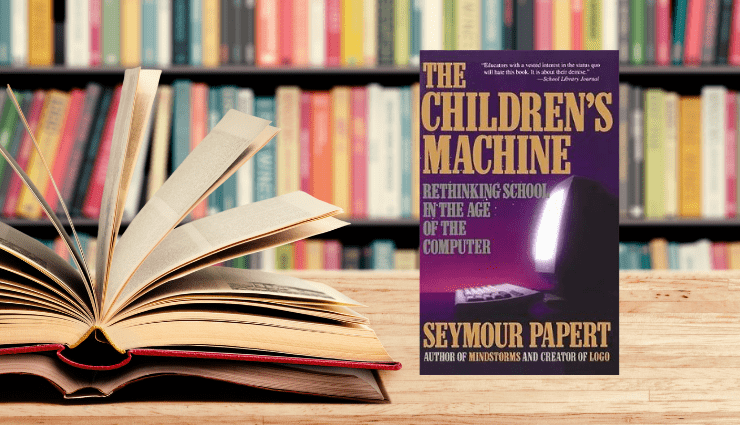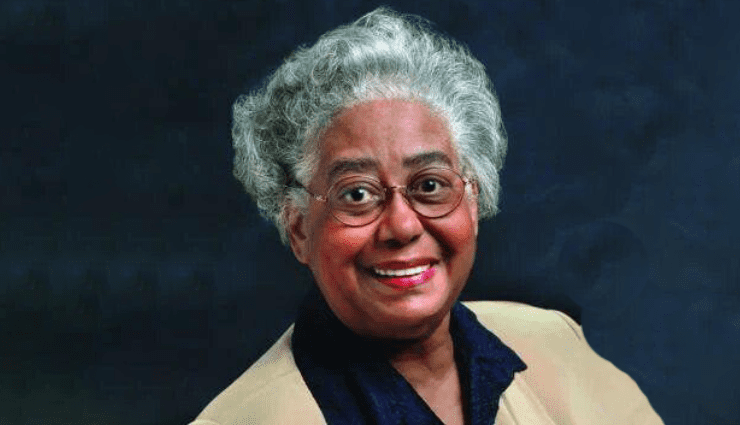Reiterating the Obvious

I thought I was done for a while blogging about older books on education that still ring true — that speak to the challenges we face in schools today. But then I scrolled through a list of artist Austin Kleon’s favorite books from this past summer and it included “The Children’s Machine: Rethinking School in the Age of the Computer,” by Seymour Papert — and I remembered the feeling I had reading this book the first time. Here’s a writer who knows technology, its value, and its dangers. More importantly, here’s a writer who understands what it means to educate children well — and why, in schools, all of our fast-developing computer technology needs to remain in service to this essential human work.
But what really made me to go back and reread the book was Kleon’s final comment about “The Children’s Machine.” He writes, “‘One must never get tired of reiterating the obvious,’ Papert wrote, and it’s true of so many great books about education: We know how it works, we just won’t or can’t do the things that really help children thrive.”
This stopped me in my figurative tracks. It’s a feeling I’ve carried around for years. Having spent much of my lifetime working to support and encourage school improvement, as part of our larger effort to improve human society, I’ve come to see that we already know most of what we need to know about educating children well. But, as Kleon writes, for some reason, or a host of reasons, we won’t or can’t do it — at least not consistently. It seems, we need to get off track with each generation and then once again rediscover what matters, only to get off track again. It’s a disturbing pattern that I can’t quite figure out. The question I carry around now is a simple one, “Are we progressing or not?”
While I mull this one over, however, I have decided that Papert is right, “One must never get tired of reiterating the obvious.” While “The Children’s Machine” offers insights in the use of technology in schools, what I love about the book is the way he reiterates the obvious — what we’ve known about educating children at least as far back as Plato and what we need to ensure we always keep forefront in our minds, or remind ourselves when things start to go catawampus again and forget that children aren’t empty vessels to fill with facts we deem important.
I don’t mean to simply reduce Papert to a writer who echoed what we’ve long known about teaching and learning. In fact, Papert has actually helped shape and reshape so much of what good schools do today — and has contributed some of the most important work on how children learn while anticipating other advances in learning. Perhaps the least important part of “The Children’s Machine” is the machine itself, the computer. What matters is not the technology but how teachers can leverage technology wisely to enable students to learn well.
From a sociological view, it’s interesting to read about children using the Logo program (Papert’s invention) to program and move electronic turtles around. But mostly, one is reminded of just how clunky computer technology was in the beginning and how explosive it has been since the mid-1990s.
What I think will matter more to educators is Papert’s exploration of the opportunities to reimagine education in the 21st century so it focuses on the process of learning, on engaging students in pursuing their interests and curiosity and developing their problem-solving skills. The question he asks us to explore is how the computer can aid in this process. He makes this point on the very first page: “The most important skill determining a person’s life pattern has already become the ability to learn new skills, to take in new concepts, to assess new situations, to deal with the unexpected. This will be increasingly true in the future. The competitive ability is the ability to learn.”
I’m particularly taken by the writing in the chapter, A Word for Learning, in which Papert speaks directly to the challenge of helping each and every student (and every adult) develop a growth-mindset and the essential metacognitive skills needed for lifelong learning. Although the word he coined for learning — mathetics — never took hold, Papert here speaks directly to schools that have a tendency to over-program students, over-stuff the daily schedule, and remain anchored to the worn-out practice of promoting the infusion of information (for testing?) over the art of solving problems, of engaging in creativity, collaboration, the practice of iteration, and pursuing one’s curiosity to create astounding work. More than anything, he encourages us to ensure that joy is always an essential element of learning and teaching.
Papert is a South African-born American mathematician, computer scientist, and educator who invented the Logo programming language and spent most of his career teaching and researching at MIT. He was one of the pioneers of artificial intelligence, and a proponent of the Constructionist movement in education. When he died in 2016, his obituary on the MIT website notes that Papert’s ideas and inventions transformed how millions of children around the world create and learn: “Computers could be used not just to deliver information and instruction, but also to empower children to experiment, explore, and express themselves. The central tenet of his Constructionist theory of learning is that people build knowledge most effectively when they are actively engaged in constructing things in the world.”
While the computer technology he worked with was, in comparison to today, quite elemental, he understood the possibilities for growth — and for both the use and abuse of computer technology in schools. There is so much in education that he anticipates — from the ability for students to collaborate virtually across the globe to the growth of small, experimental schools. He has even predicted the current, pandemic-driven push for micro-schools — where like-minded parents hire a teacher, assisted by the wealth of knowledge and information available on the internet, to teach a small group of children. On the downside, he also saw the dangers of the education-technology companies trying to run the show. Mostly, he understood that education in America needed to shake off any overly bureaucratic approach to drilling and testing children and embrace some variation on student-centered learning. He was also smart enough not to even try to be proscriptive about it. School by school, teachers supported with the right resources and the right technology are more than capable of figuring out a curriculum that works well for their particular students. In this way, without saying it directly, Papert understood the potential for independent schools and small public or charter schools to leverage computer technology wisely for the education. What he hoped never to see, however, is a world divided between the haves and have-nots when it comes to quality education.
This combination of a social consciousness and technical knowledge made Papert a particularly important voice in education at the turn of this century. He saw the great potential for leveraging information technology to solve social issues and revolutionize education for all students. Through his understanding of human development and his work with Jean Piaget, he encouraged schools to respect children deeply, empower them more, and help them explore their interests and the issues that matter to them most. He encouraged a new theory of learning that reflects so much of the best thinking on education of the last 20 years — from project-based and outdoor learning to makerspaces and a deeper commitment to the arts.
In the late 1990s, Papert moved to Maine and continued his work with young people there, establishing the Learning Barn and the Seymour Papert Institute in 1999. He also set up a Learning Lab at the Maine Youth Center, where he worked to engage and inspire troubled youths who had received little support at home or school. He was also integral to a Maine initiative requiring laptops for all 7th and 8th graders. Following the Maine initiative, Papert joined MIT’s Nicholas Negroponte and Alan Kay in 2004 to create the nonprofit One Laptop per Child (OLPC), which produced and distributed low-cost laptops to the world’s poorest children. The organization produced more than three million laptops, reaching children in more than 40 countries.
“With a mind of extraordinary range and creativity, Seymour Papert helped revolutionize at least three fields, from the study of how children make sense of the world, to the development of artificial intelligence, to the rich intersection of technology and learning,” says MIT President L. Rafael Reif.
Rereading “The Children’s Machine,” we get the chance to see this extraordinary mind at work, and the chance to reconsider what we think matters most in schools as we move toward the heart of this already complex and complicated century.
Michael Brosnan is an independent writer and editor with a particular interest in education and social change. He can be reached www.michaelabrosnan.com.








